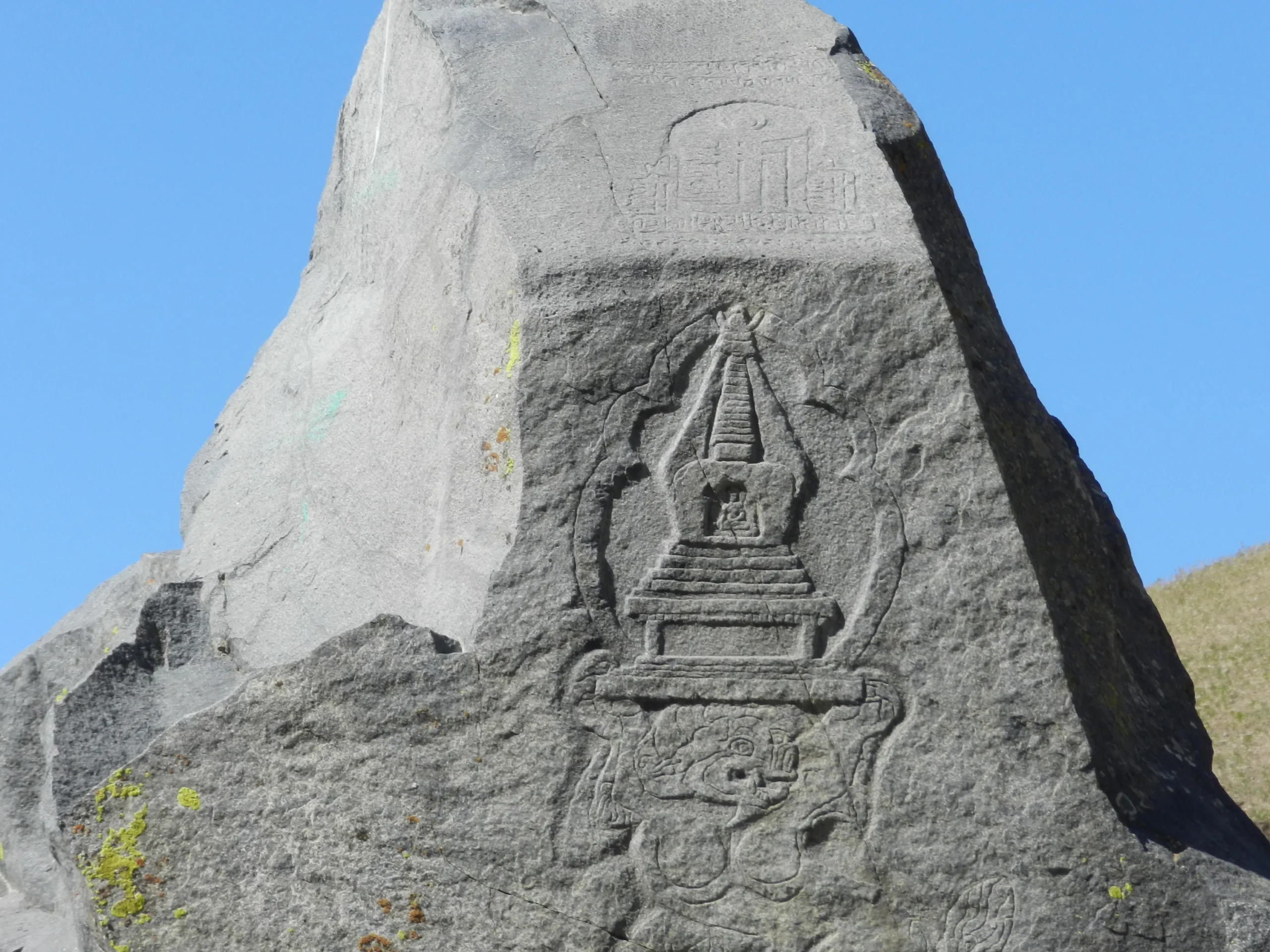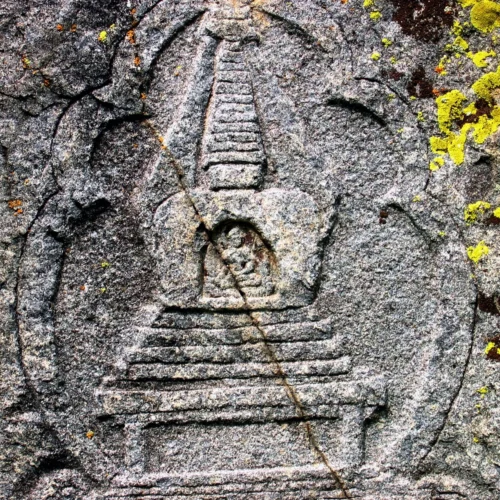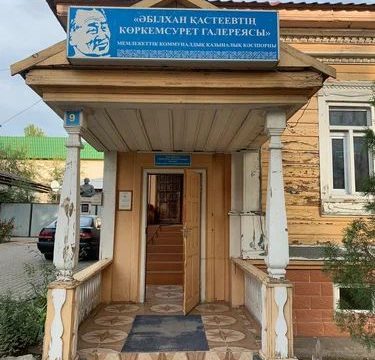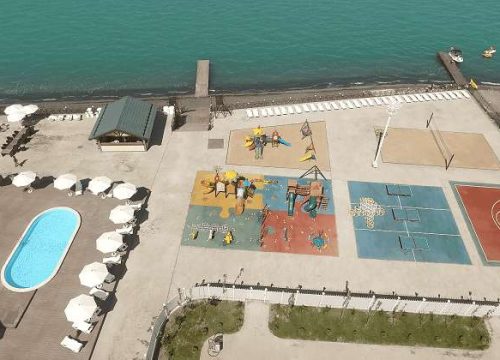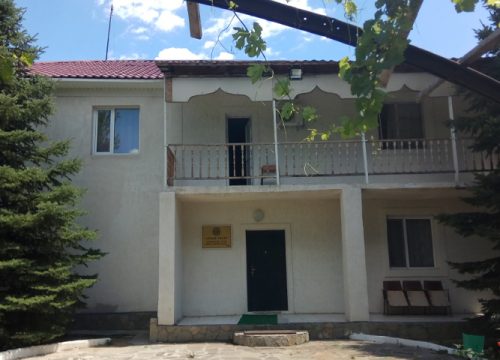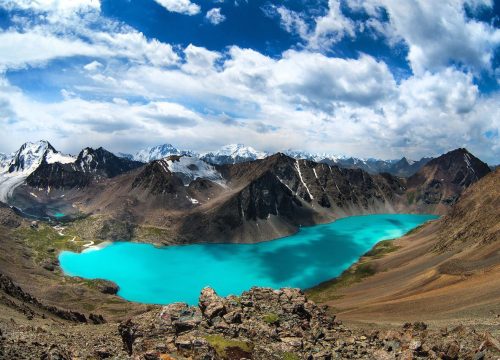The “Buddha” stone
At the entrance to the Kora River gorge stands a three-meter-tall stone with an image of Buddha carved on it. At the top center of the stone, there is a natural depression filled with water. The water in this hollow is held year-round and is revered by locals as sacred. According to local beliefs, it has healing properties. There is also a second belief that if you throw a coin into the water and make a wish, it will come true.
On the stone, there is a symbolic image of a lotus, which is a schematic drawing of a pagoda, and a mythological animal.
The Snow Lion, considered the bravest animal, holds the stupa in its paws.
At the top of the “Buddha” stone, you can see a complex magical monogram of Kalachakra, called “Ten Mighty Letters.” By changing oneself, a person thereby affects the surrounding world.
One of the legends about this sacred stone says that on the reverse side of the stone, there is a footprint of Buddha. When Buddha ascended to the Burkhan-Bulak waterfall, he rested his foot on the stone, and the imprint of his foot remained. Scientists differ on the exact date of the sacred stone’s appearance. For example, Professor Vasily Sapozhnikov (1861-1924) of Tomsk University, a geographer and ethnographer, noted this place in his travel notes as Aulie-Tas – the sacred stones of the Kyrgyz. Local historian Nurash Zhakanov believes that the stone slab bears an appeal to the Almighty for victory over the enemy. According to him, this monument appeared in the second half of the 18th century when the troops of Khan Zhanhir fought against the Zhungars.


